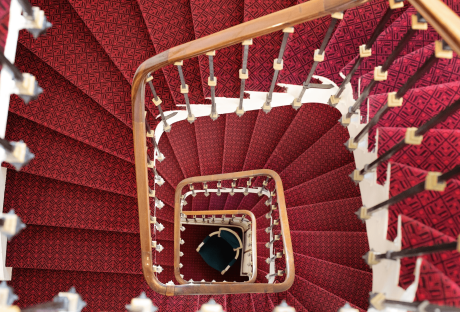When a person grows old, he/she becomes dependant on other people. Sadly, isolation can bring drastic effects on an aged patient’s wellbeing as he/she’s more susceptible to develop negative consequences.
That’s why experts often pursue senior companionship programs for older people. It’s an unfortunate fact that many hospitals worldwide still do not follow a person-centric approach.
This innovative model focuses on prioritizing a person’s values, desires, and preferences in making healthcare decisions.
Some elements that furnish an effective patient-centric plan involve focusing on physical and emotional wellbeing and having a family member present in the care setting. This approach also concentrates on providing accessible, cooperative, and collaborative facilities to the aged patients while allowing them to make informed decisions.
The elderly population in the United States is growing rapidly. It’s expected to exceed from 17% to approximately 20% by 2050. It is worth mentioning that, like every other population, senior citizens in America are also more vulnerable to isolation. These factors contribute to different challenges associated with the mental and physical wellbeing of old people.
In this article, we’ll provide an extensive explanation of why aged patients must receive patient-centered care for better results. Some of its benefits include:
1. Job satisfaction:
Satisfied doctors are more likely to treat their patients productively. It’s been observed that patient-centered care even motivates physicians to become more efficient at their jobs.
Many medical practitioners, especially nurses, take a step ahead by enrolling in various MSN to DNP nursing education programs for excellence in their careers.
This extra qualification enables healthcare professionals to focus on the strategies that can help them attain the best outcomes for aged patients. Hence, patient-centric care empowers the staff, which indirectly affects the mental/physical health of the old population.
2. Healthy environment:
Hospitals implement a patient-centered model to incorporate the patient-first approach. This leads to the creation of a supportive environment where patients are provided individualized attention and personalized healthcare. This environment contributes to the patient’s emotional wellbeing.
This model further streamlines the workflow, thereby enhancing the organization’s overall efficiency. Patient-centric care ensures that the staff eliminates every inefficiency and capably delivers the facilities your patients need.
3. Patient engagement:
The ancient residents feel valued and respected when hospitals implement a patient-centric model. Focusing on their needs and abilities, patient-centered care enables patients to participate in decisions related to their healthcare plans actively.
With a quality-based patient experience, hospitals can drive greater patient engagement. When you deliver a personalized experience to the patient community, they communicate efficiently with the medical staff. This communication leads to their well-being.
When your patients feel satisfied with the healthcare they receive, it increases their life expectancy. Since the individualized care makes them feel important again, patients believe that they’re leading a purposeful life instead of living a pathetic, meaningless existence.
4. Patient profile:
The patient-centric model allows the creation of a holistic patient profile for better healthcare facilities. This approach enables the medical staff to collect the patient’s information for better understanding.
Now, whenever a patient engages with a medical expert, he/she will access the patient’s medical records. This practice enables doctors to understand the patient’s unique touchpoints – risk factors and medical records – to provide the right medicinal solutions.
5. Mental health:
The elderly often feel helpless and secluded from their surroundings. This sense of isolation isn’t healthy at all! Boredom affects the mental health of elderly patients.
However, patient-centered care allows them to engage in several activities. These actions ward off depression and cure their sense of solitude. Some of these riveting activities involve mundane tasks such as:
- Painting
- Gardening
- Listening to music etc.
A study published by Pew Research last year showed that one-fourth of US adults aged 60+ are living alone. This means more and more adults are likely to face mental health issues, which has increased the need for quality health care in older adults.
6. Good reputation:
This approach improves patients’ satisfaction since the patient-centered service aligns with the patients’ healthcare expectations. The Beryl Institute found that over 70% of patients would share their good or negative experiences at a healthcare institute, making satisfaction important for your reputation.
This practice also improves your organization’s public perception. Since we live in a world where online reviews are of uttermost value, it may affect a hospital’s reputation if patients aren’t happy with the health outcomes. Patients who feel that they’re properly taken care of by the medical staff enable the organization to maintain its reputation and remain in patient’s good books.
Conclusion:
Patient-centered care helps them curb loneliness and escape isolation. This approach improves the healthcare outcomes in any country for the aged population.
In the end, several researchers have demonstrated that patient-centered care has better results than traditional medical maneuvers for the elderly. Hospitals that implemented a patient-centered approach have reported better health outcomes since patients recover faster and don’t frequently visit ER.
























